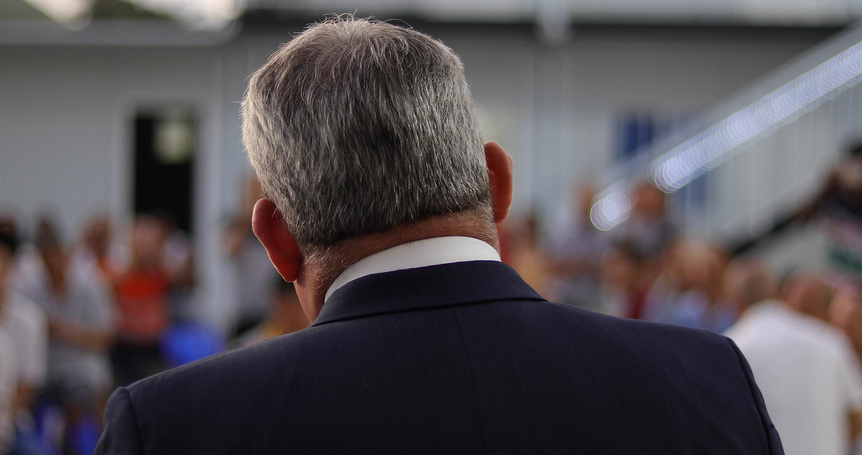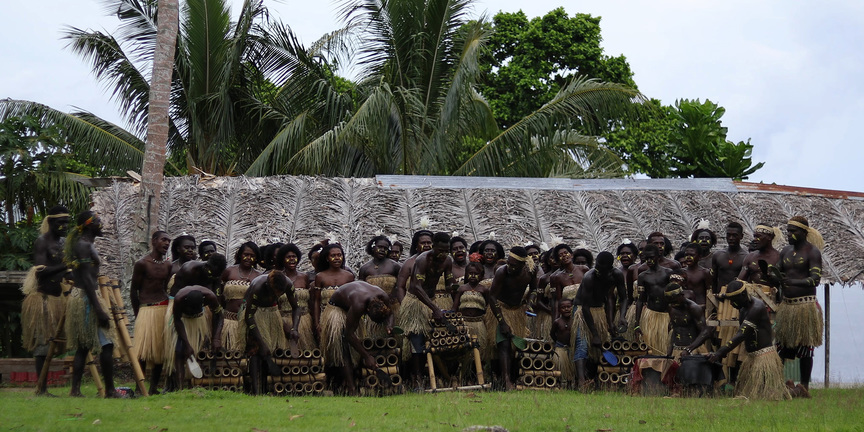
R
E
V N
E
X
T
For an artist, videomaker Fang Di has an unusual travel schedule. He divides his time between two very different places: half a year in his hometown, the industrial hub Shenzhen, then across the Philippine Sea to Port Moresby, the capital of Papua New Guinea (PNG), for the other half. After finishing his degrees at the Guangzhou Academy of Fine Arts and the Mount Royal School of Art in Baltimore, Maryland, the artist started working for a state-owned company and eventually moved to PNG to oversee infrastructure projects in the region as part of China’s Belt and Road Initiative. Fang leads a double life on the islands; among his colleagues, he hides his identity as an artist. In his video works, however, he offers a glimpse into his second life as an outsider in the South Pacific. For instance, he traces the curious success story of an Australian botanist-turned-PNG minister for sports, and immerses his audience in the soundscape of a bamboo pipe band from Bougainville.
Fang deals with the many peculiar histories that unfold in his immediate environment in the South Pacific, where his personal experiences are deeply intertwined with the economic shifts and geopolitical issues of today. On the occasion of his group show “Micro Era” at Berlin’s Kulturforum, we met to discuss his motivation to shuttle between China and the Pacific islands, and his outsider experience both as a Chinese company worker and a foreign artist in PNG.
What brought you to Port Moresby, and how does it inspire your art?
I have been working at a state-owned enterprise for about five years now. Back in 2016, the company received an offer for an overseas construction project. At the time, I didn’t know much about PNG. In the news, I saw that the country was often related to negative press: robberies, or murder. I gathered this wasn’t really a safe place to live, but I was too intrigued by their cultural heritage, and the possibilities of creating works there. Things were decided fairly quickly and I was actually the very first employee of the company volunteering to move to the island. And I knew early on that this place would become my second home.
The island countries along the South Pacific region have been part of my research for the last three years. My interest lies in the local particularities of PNG with its rich linguistic culture and the many social contradictions there today. The region also retains much of its original biogeographical appearance since it is pretty isolated, which I find very precious in today’s globalized world.
How do you juggle your two jobs?
For my company job, I am involved in the construction and management of a school and a highway project in PNG. As a fine arts graduate, I am in touch with a completely different community in PNG as well, including politicians, villagers, miners, construction workers, and so on. They share their stories with me and help me add to my still-lacking understanding of this foreign industry, and to see the world through their eyes. Many Chinese workers in Papua New Guinea are young, ambitious, and spirited people committed to the overseas projects, and most of them were born in rural China. My colleagues and partners in PNG are basically all scientists, engineers, or work in IT. They don’t know that I have another identity as an artist. In the past three years of work and life in Papua New Guinea, I kept this other side of my work secret.
In a way, I have become a chameleon there, finding different perspectives to absorb and digest the difficulties brought about by survival, migration, and race in the region. I have to constantly re-examine my personal views on politics, society, and life. Instead of consuming information through my computer screen, I enjoy learning and create new things directly on site. My job and my artworks are interlaced—my daily work may always bear some possibility of generating an artwork. In the long run, I found a comfortable balance to navigate between the two.
Installation view of FANG DI’s Minister, 2019, single-channel video installation with color and sound: 60 min, at “Micro Era. Media Art from China,” at Kulturforum, Berlin, 2019–20. Photo by David von Becker. All images copyright and courtesy the artist and Vanguard Gallery, Shanghai.
In your videos, you deal with the contradictions arising from urban life, local politics, and traditions. Could you elaborate?
Several of my works on the South Pacific island countries, especially PNG, deal with what I have seen and discussed with locals. PNG is a Commonwealth country. In the early days of independence, the instability of the political party system led to frequent votes of no confidence in the parliament, which led to frequent changes in the government. Even today, this is often the case. Many know PNG also has a huge corruption problem, and is one of the poorest countries of the 21 Asia Pacific Economic Cooperation (APEC) economies, with an incredibly high, increasing amount of national debt. At the same time, we have preposterous political splurges such as the purchase of luxury cars solely for driving around the leaders at the APEC summit in 2018, which left the population even more skeptical of government expenditures.
You draw unconventional narratives from the recent history of PNG, for example in your new work Minister (2019), an hour-long film on the career of a botanist-turned-politician on the island. How did you come across this subject?
I have actually become close with the protagonist of this work, the minister for sports in PNG, Justin Tkatchenko, after meeting him during my day job. He is the only white person in the House of Representatives—a fact that incited great interest on my part. In the process of gradually understanding and getting closer to him, I slowly learned about his background. He originally came from Australia because of his avid love for orchids—the studied horticulturist even published a book on orchids of PNG in 2006. He went on to become a popular TV host, and, in 2012, became a member of the Parliament in PNG, which was the beginning of his political career—not an unusual story these days. Today, he is a supporter of APEC and the close partnership with China, which makes him a controversial but also fascinating person to capture on film.
Could you also elaborate on The Magical of Pipes (2019), which you just finished this year?
In The Magical of Pipes, I filmed locals on Bougainville using bamboo to make instruments, producing melody and rhythm by tapping the wood, singing and dancing. I first saw this performance in Port Moresby and wanted to go to the island to see them live.
Like many places in PNG, this autonomous region has an interesting history: it houses the Panguna mine that has long been the backbone of the country’s economy, and is one of the largest copper reserves in the world. In 1988, the uprising of the local population, which accused the mining company of environmental and health offenses, led to a decade-long civil war in the region, causing copper and gold mines to stop production. The imbalance in development has led to high prices, and the poor population of this region fantasizes about independence and restarting mines that they believe will help them get rid of poverty. The Magical of Pipes is a performance that shows the return of local residents to their customs, singing of their mothers and the plea to accompany them in their growth, and singing praises of the gifts of their great land.
What role does music and sound play in your work?
My engagement with a city depends a lot on sound and smell. These two elements are very important to me. Sound can be recorded, but the display of smell is obviously very difficult. So sound has become the most relevant aspect in the recreation of a scene to me. The Magical of Pipes reflects this sound experience of a place very well.
How critical are you about your own involvement in the Belt and Road Initiative, but also as an outsider in PNG? Does this translate to your art?
From the outset, the Belt and Road Initiative was a curious concept to me. It was told in this grand manner, almost like a fairytale. I wanted to know how it worked, and what the actual development of it would look like, not on social media, but in reality.
As the curator Yang Beichen says about my works, my perspective is very much “embedded in the narrative [of the Belt and Road Initiative].” I have more information at hand than an outsider because I am an actual participant in it. Of course, I am also not a local artist, who would maybe think I was too naïve in depicting this place in my works. But in my opinion, an in-betweener like me is more keen to explore these “glocal” perspectives.
What does the future hold for you? Are you considering a fulltime artistic career?
Even if I continue to have a day job, I will always create artworks. I am still not sure about ever becoming a fulltime artist. To me, hands-on experience like my company work is very important to producing art. Perhaps I will join a different industry later on, but I will surely not restrict my work to an artist studio.
“Micro Era. Media Art from China” is on view at Kulturforum, Berlin, until January 26, 2020.
To read more of ArtAsiaPacific’s articles, visit our Digital Library.

















